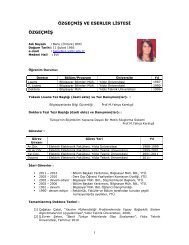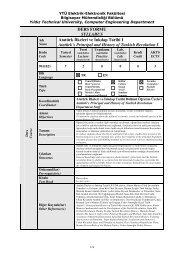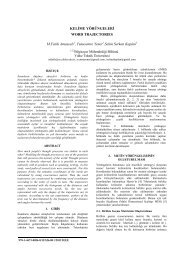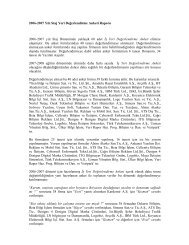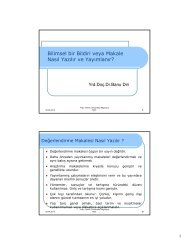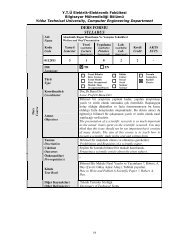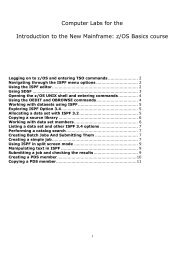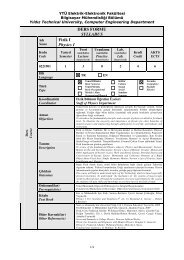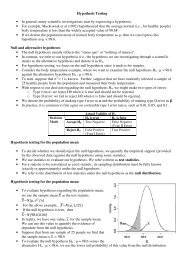PROGRAMMABLE LOGIC DEVICES Read Only Memory (ROM) - a ...
PROGRAMMABLE LOGIC DEVICES Read Only Memory (ROM) - a ...
PROGRAMMABLE LOGIC DEVICES Read Only Memory (ROM) - a ...
Create successful ePaper yourself
Turn your PDF publications into a flip-book with our unique Google optimized e-Paper software.
Figure: Block diagram and Internal Logic of a <strong>ROM</strong><br />
Depending on the programming technology and approaches, read-only memories have different<br />
names<br />
1. <strong>ROM</strong> – mask programmed<br />
2. P<strong>ROM</strong> – fuse or antifuse programmed<br />
3. EP<strong>ROM</strong> – erasable floating gate programmed<br />
4. EEP<strong>ROM</strong> or E 2 P<strong>ROM</strong> – electrically erasable floating gate programmed<br />
5. FLASH memory: electrically erasable floating gate with multiple erasure and programming<br />
modes.<br />
Example: A 8 X 4 <strong>ROM</strong> (N = 3 input lines, M= 4 output lines)<br />
• The fixed "AND" array is a “decoder” with 3 inputs and 8 outputs implementing minterms.<br />
• The programmable "OR“ array uses a single line to represent all inputs to an OR gate. An<br />
“X” in the array corresponds to attaching the minterm to the OR<br />
• <strong>Read</strong> Example: For input (A2,A1,A0) = 011, output is (F3,F2,F1,F0 ) = 0011.<br />
• What are functions F3, F2 , F1 and F0 in terms of (A2, A1, A0)



